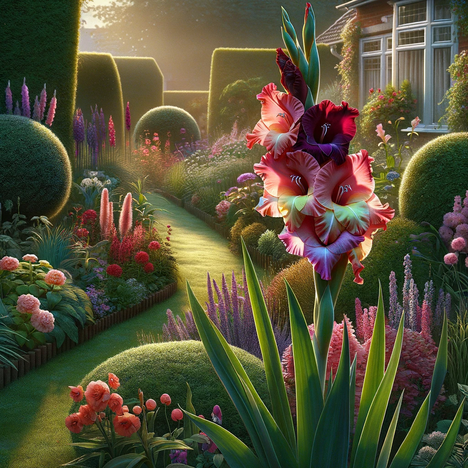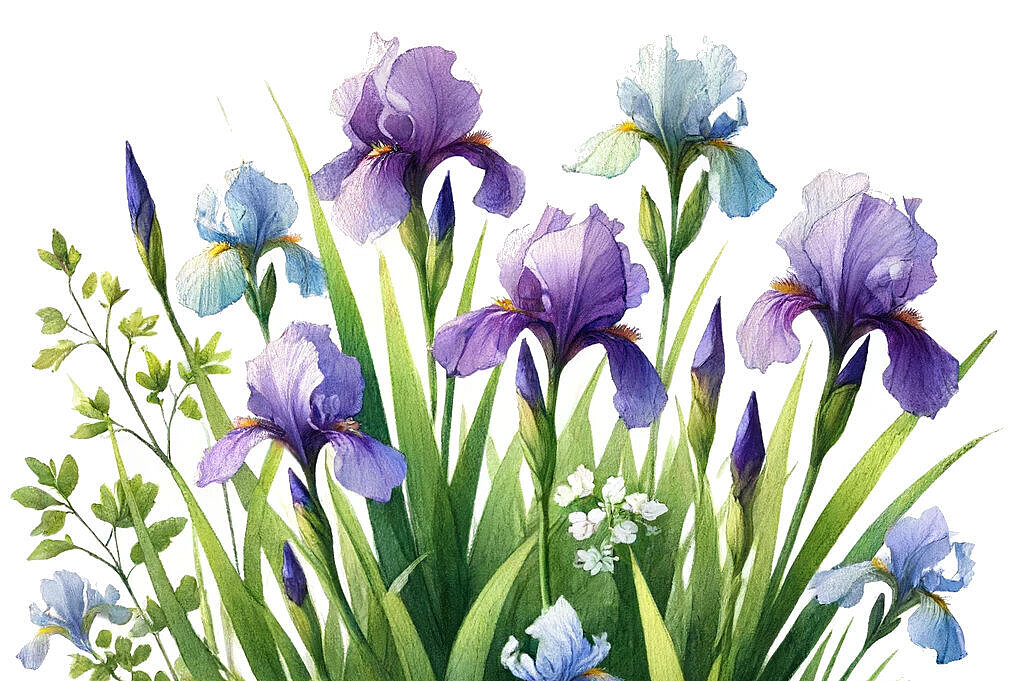Gladioli

What are gladioli?
Gladioli (Gladiolus spp.) are attractive flowering plants that are appreciated for their long inflorescences and variety of colors. Originally from Africa, Asia and the Mediterranean region, they belong to the iris family (Iridaceae) and can be found in many gardens and as cut flowers in households.
Potential benefits of gladioli
Decorative aesthetics
In relation to dogs, gladioli per se offer no direct nutritional benefits. Their main benefit lies in the aesthetic enrichment of the environment, which can indirectly influence the well-being of pets by creating a pleasant and stimulating environment.
No known nutritional benefits
There is no scientific evidence that gladioli have any positive effects on the diet or health of dogs. Therefore, they should not be considered as part of the dietary intake.
Risks and disadvantages of gladioli for dogs
Toxicity
A major disadvantage and danger of gladioli is their toxicity to dogs. Gladioli contain poisonous alkaloids which, if eaten by dogs, can lead to symptoms such as vomiting, diarrhea, salivation and lethargy. In severe cases, neurological symptoms and heart problems can occur.
Digestive problems
In addition to toxicity, non-digestible plant parts can cause digestive problems in dogs, including intestinal obstruction and stomach irritation. This emphasizes that gladioli are not a safe part of a dog's diet.
Preventive measures
To minimize the risks, gladioli and other poisonous plants should be kept out of the reach of dogs. If ingestion is suspected, a vet should be consulted immediately. It is advisable to inform yourself about poisonous plants and ensure that the dog's environment is free of potential hazards.
Safety first
To summarize, gladioli are not a suitable ingredient in a dog's diet due to their toxicity. While they find their place in gardens and vases as decorative flowers, it is of utmost importance to ensure the health and safety of our four-legged friends by keeping them away from such plants. A dog's diet should always be safe, balanced and adapted to their specific needs to promote a long and healthy life.
If you notice any signs of hypersensitivity or poisoning in your dog, you should see your vet immediately. We are not a substitute for a vet, but we try to be as accurate as possible. Every dog reacts differently and we recommend you get a second opinion or consult your vet if in doubt.
Stay healthy and take good care of your four-legged friend!😊
Similar to Gladioli
Lilies are a plant family comprising over 100 genera and more than 4000 species. They usually grow as bulbs or tubers and have long stems with large flowers. Lilies are found in many parts of the...
Irises, also known by the scientific name Iris, are a genus of flowering plants known for their showy flowers. They belong to the Iridaceae family and include between 200 and 300 species, depending...
Tulips are a genus of plants from the lily family, which includes around 150 different species and various hybrids. They originate from Europe, Central Asia and North Africa and are now cultivated...
Daffodils contain various alkaloids that can be poisonous to dogs. These substances are mainly found in the bulbs, but also in the leaves, stems and flowers of the plant. If they are eaten or...



